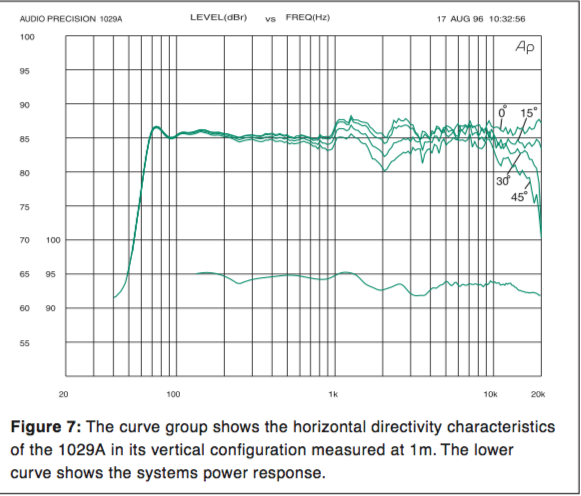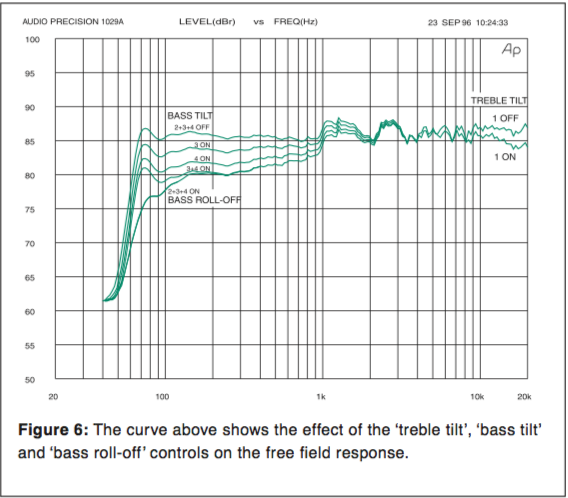I just received the second Audix TR40 measurement mic (discontinued) I have purchased on eBay. I was anxious to compare it with the other Audix TR40 I just received to see if they are close enough in frequency and phase response to use as a ONAX / OFFAX pair. Sometimes I don’t want to put up my matched pair of Earthworks omni’s I use to record and I was curious how well the Audix TR40 would compare to an Earthworks mic.
For my last mic comparison I used a Bose Wave Radio/CD device but this time I wanted something with a little bit more low end reach and also with a known response. I used my Genelec HT205 / 1029A pair in the studio for the sound source.
Here is the specs for the speaker:
Here is the PDF manual for the 1029a which is the pro version with a TRS and XLR connector. The HT205 is the home theater version which has an RCA & XLR connector. Same device otherwise.
Here is the frequency response data from the manual:
Figure 7 shows the HF response at 0,15,30,45 degrees off axis. Note that the HF change is almost exclusively above 10khz.
Figure 6 shows the on axis response based on the 4 dip switches on the back. With those dip switches you can reduce the bass response below 1khz and / or reduce the treble response above about 8khz.
The speaker spec states 70hz to 18khz which doesn’t tell us much. Based on the frequency response chart, they could of easily claimed that it produces 70hz to 20khz. In order to know what is what, we need a +/- spec. For example, based on the frequency response given I would call this speaker 70hz to 20khz +/- 3db. A 6 db window between the highest and lowest frequency level within the provided response. Of special mention is a 3.3khz crossover point between the 5″ woofer and 3/4″ metal dome tweeter. We might expect there to be some phase shift at the cross over point when we measure the speaker. We might also expect to see a phase shift in the low end where the ported speaker cabinet begins to roll off mechanically roll.
Let’s take a look.
INSERT RESULTS.




